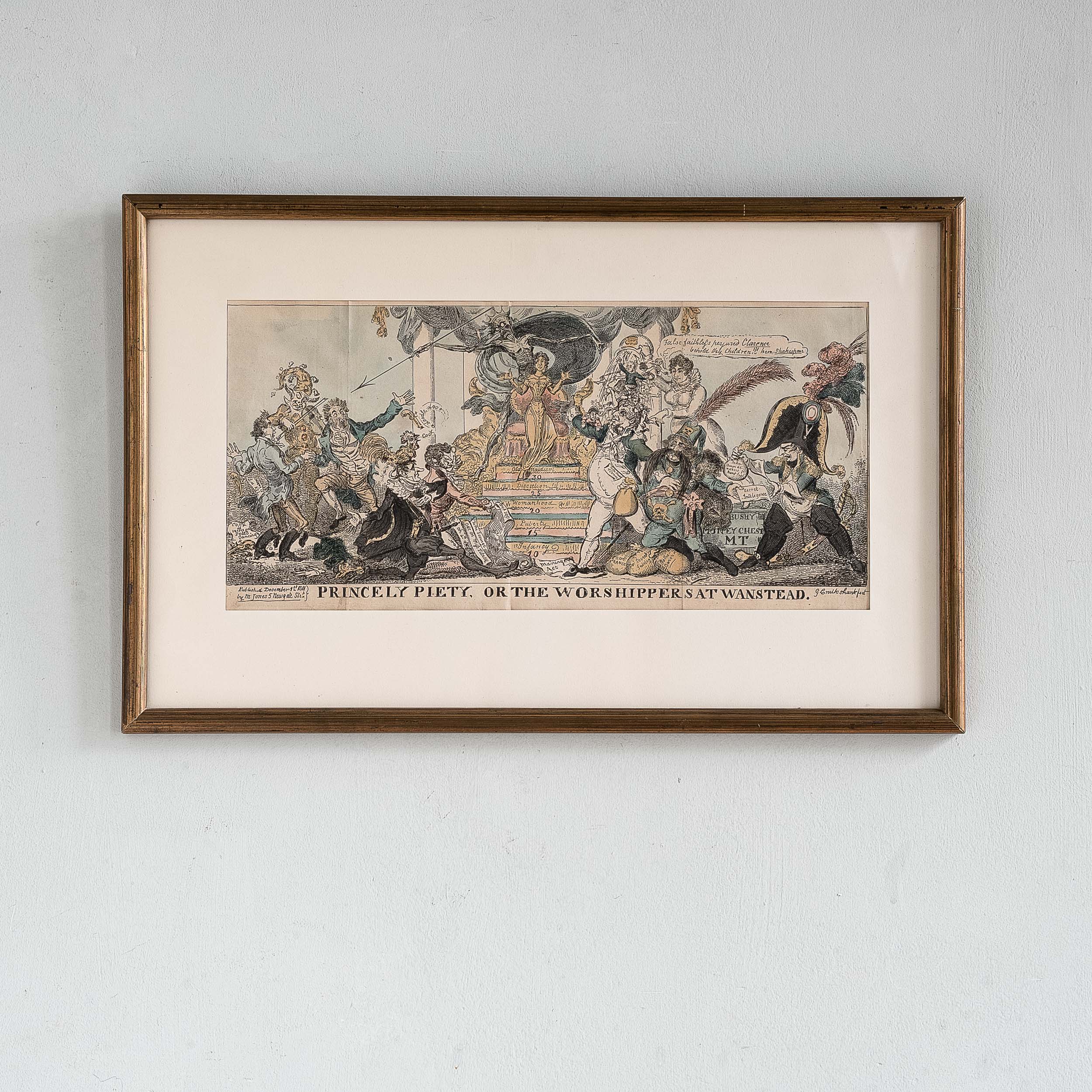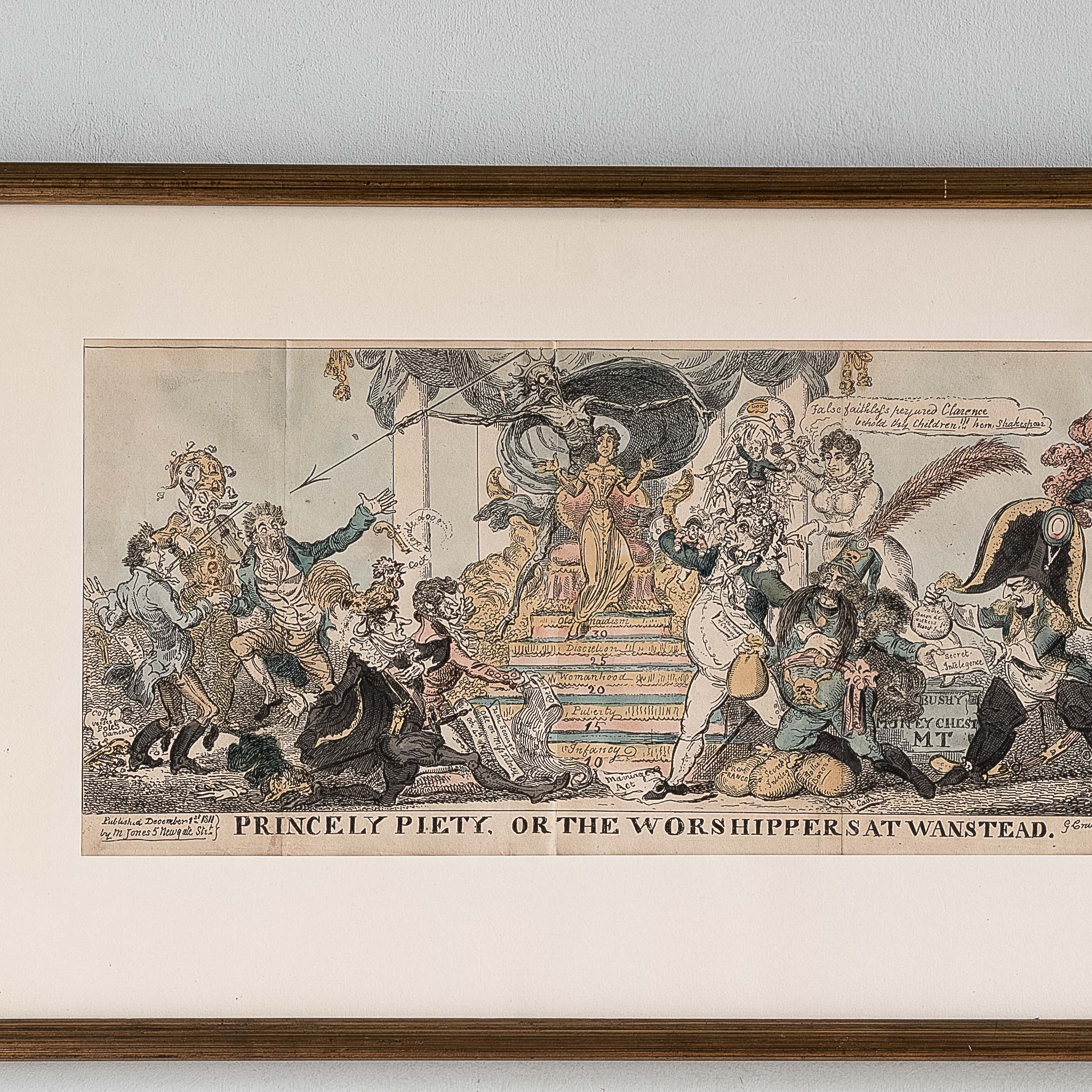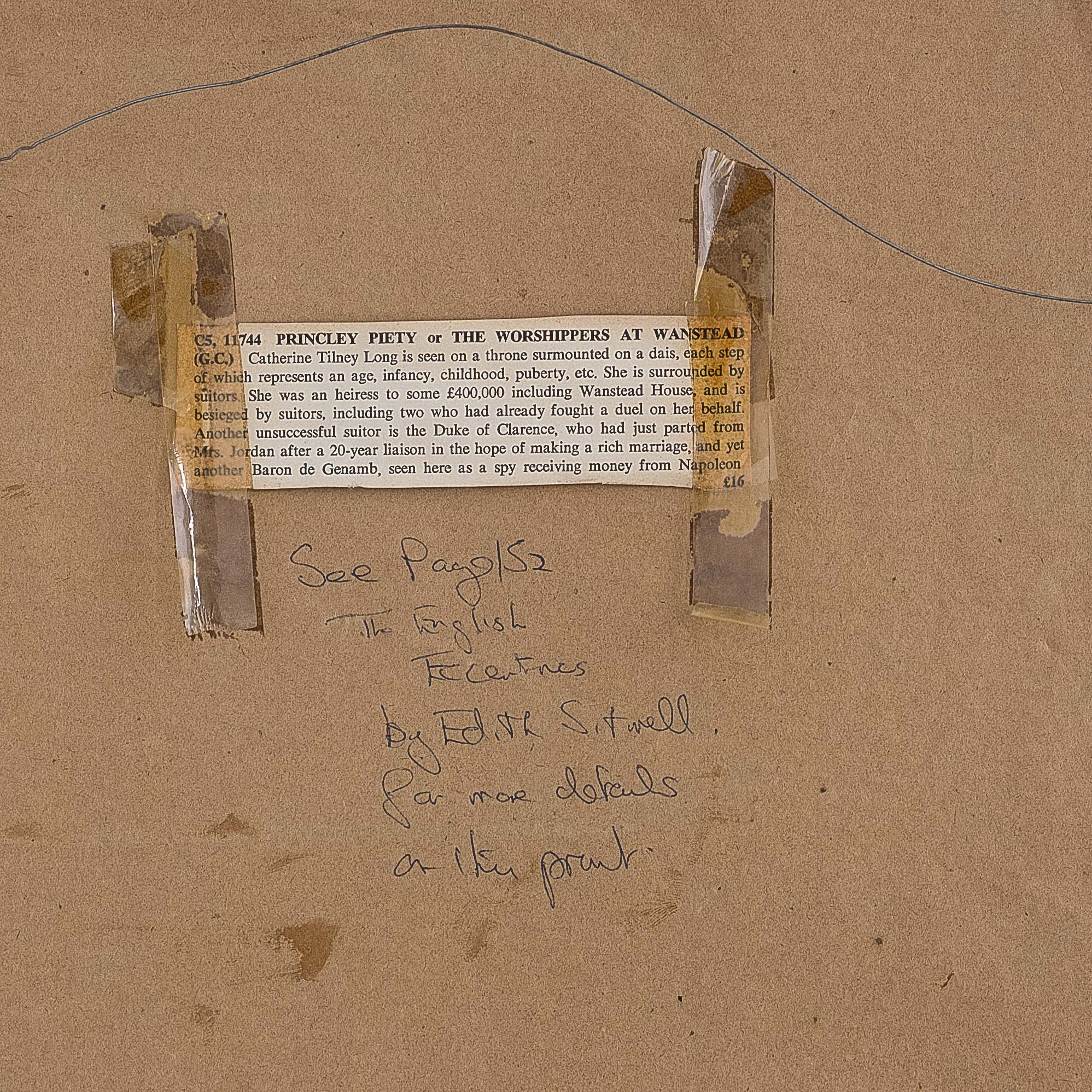No products in the basket.
Princely Piety, or the worshippers at Wanstead,
George Cruikshank, 1811.
A hand-coloured etching by the caricaturist George Cruikshank depicting the wooing of a wealthy young heiress by a cast of reprobate suitors.
Upon the death of her only brother James at the age of 11 in 1805 Catherine Tylney-Long became the richest commoner in England in her own right. At the tender of of 16 the 'Wiltshire Heiress' had come into a fortune of nearly £30,000,000 in today's money. This made the poor girl a prime target for every fortune hunter and indebted rake in England who wished to clear his creditors.
The law as it stood in the early 19th Century had degenerated to such a degree that, under the principle of coverture, it denied a married woman any property at all in her own right while her legal existence as a feme covert was entirely subsumed in that of her husband. This left the wealthy orphan daughter of Sir James Tylney long, 7th Baronet in a difficult and precarious position, caught between the social stigma attached to unmarried womanhood and the appeals of a host of insinuating cads seeking her hand in marriage.
Here Cruikshank depicts the many and assorted indigent suitors for the hand of the wealthy heiress. To the left of the dais are shown Lord Kilworth and William Wesley-Pole, later 4th Earl of Mornington a dissipated Anglo-Irish nobleman, who dueled over the courtship of Catherine. Kneeling at the foot of the steps we may also see the figure of Romeo Coates, unintentionally comic actor and 'improver' of Shakespeare included apparently 'not because of his pretensions, but his boasts and wishes'. Above him we see the fop and jobbing playwright, Sir Lumley Skeffington laying his poetic efforts at the feet of the heiress. On the right hand we see The Duke of Clarence, later William IV who by this point had debts of many hundreds of thousands of pounds holding back Baron-de-Geramb, a Spanish military adventurer and suspected Napoleonic spy who later became a Trappist monk where he used his position as procurator-general of that ancient order to defray his personal expenses. Above the Duke we see reproving the figure of Mrs Jordan, his 'common-law' wife with whom he had fathered many children at his retreat of Bushey Park.
The farcical presentation of the situation belies it's tragic outcome. Perhaps cajoled by just such unkind insinuations as are repeated in this caricature Catherine would choose the worst-of-the-bunch, William Wesley-Pole, as her preferred suitor. William Wesley-Pole-Tylney-Long, as he became by Royal Licence in 1812, was an unredeemed rake and not only abused and impoverished his saintly young wife but also passed her a debilitating infection and caused her family seat at Wanstead House to be demolished and sold for salvage. After a short and unhappy marriage Catherine died at the age of only 35 after receiving a final brutal letter from her estranged husband, the contents of which apparently caused her to have some form of seizure. Frustrated in his efforts to gain custody of their son William, on whom the family fortune had devolved, William Pole Tylney-Long-Wellesley, 4th Earl of Mornington (the final name by which he was known) died in 1857 unwept, unhonoured and unsung if also unrepentant. His obituary in the Morning Star described him as "A spendthrift, a profligate, and a gambler in his youth, he became debauched in his manhood... redeemed by no single virtue, adorned by no single grace, his life gone out even without a flicker of repentance".
£595
In stock



